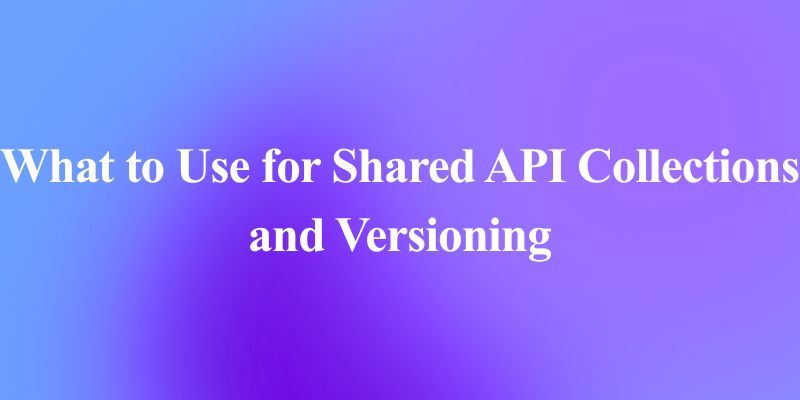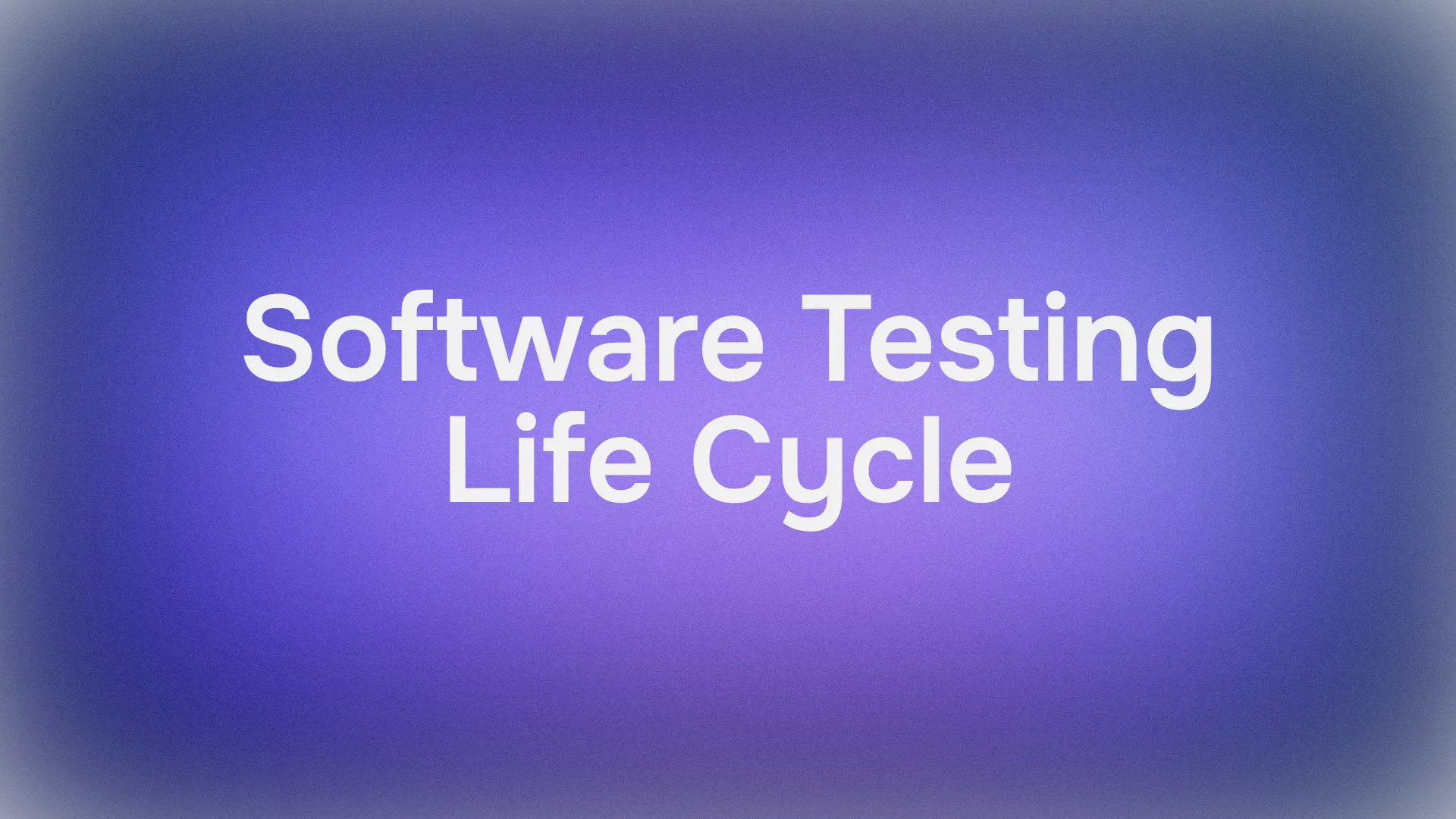PearAI is a powerful AI-driven Integrated Development Environment (IDE) that simplifies coding with its seamless AI integration. It is an excellent alternative to traditional editors like VS Code and Cursor, offering built-in AI features without requiring additional extensions. In this guide, we'll walk you through how to install and use PearAI effectively.

Getting Started: Installing PearAI
Download the Setup
- Head over to https://trypear.ai/ to download PearAI for free.
- The installation process begins with downloading an installer.
Installing PearAI
- Once the installer is downloaded, run it to configure the setup.
- The configuration process will automatically set up an environment similar to VS Code.

Customizing the Interface
- PearAI supports different themes, including dark, light, and high-contrast modes.
- You can select your preferred theme for an optimal coding experience.
Features and Functionalities
1. VS Code-Like Experience
PearAI replicates the VS Code interface, allowing you to access familiar features such as:
- Extensions
- Debugging tools
- Cloud development environments
2. Signing In to PearAI
- You can sign in using your Google, GitHub, or email account.
- Once signed in, you can access PearAI's preview welcome file, which showcases all available commands.
3. AI-Powered Assistance
- New Chat Panel: Press
Ctrl + Lto open a chat panel similar to Cursor’s assistant. - Command Assistance: Use
Command + Ito open an AI-driven chat window for coding help. - Line Prompting: Get inline AI-powered suggestions while coding.
- Chat History & Model Switching: Easily switch AI models and revisit previous conversations.
Quickstart
- Open the app and the chat window should appear on the right side (might load for a brief period on the first time).
- Select PearAI server and log in.


- Optional: put PearAI in your path so you can open within directories with
pearai .


Example: Getting Started with a New Codebase and Building a Feature in Just 2 Minutes
"@" Commands
How It Works
@ Commands enhance your prompts by providing additional context, making PearAI more aware of your work environment. Simply type @ in the PearAI chat to see a list of available context options. Each option is powered by a plugin, allowing you to reference specific information easily.
For example, if you're facing issues running an app locally and encountering multiple errors in the terminal, you can use @terminal to include the error logs and @files to attach the package.json file. This enables PearAI to quickly analyze and debug the issue, streamlining the entire troubleshooting process.

Built-in Context Providers
PearAI includes several pre-configured context providers to enhance your workflow. You can customize these by adding or removing providers in config.json under the contextProviders list.
@Files
Enables you to attach a file as context, allowing PearAI to reference its contents for better assistance.
{
"contextProviders": [
{
"name": "files"
}
]
}
Built-in Context Providers
PearAI includes several context providers that help streamline your workflow by incorporating relevant information into your interactions. You can enable or disable these providers in config.json under the contextProviders list.
@Codebase
Includes the entire codebase as context. Be mindful that larger codebases may consume significant credits.
{
"contextProviders": [
{
"name": "codebase"
}
]
}
@Code
Allows you to specify individual functions or classes for more focused assistance.
{
"contextProviders": [
{
"name": "code"
}
]
}
@Docs
Includes a documentation site as context, making it easier to reference official documentation.
{
"contextProviders": [
{
"name": "docs"
}
]
}
@Git Diff
Provides all changes made on the current branch compared to main, useful for code summaries and reviews.
{
"contextProviders": [
{
"name": "diff"
}
]
}
@Terminal
Adds the current terminal output as context, useful for debugging and troubleshooting.
{
"contextProviders": [
{
"name": "terminal"
}
]
}
@Problems
Includes errors and warnings from your current file, aiding in debugging.
{
"contextProviders": [
{
"name": "problems"
}
]
}
@Folder
References all contents within a specified folder for broader context.
{
"contextProviders": [
{
"name": "folder"
}
]
}
@Directory Structure
Provides the project's directory structure as context, allowing the LLM to understand file organization and recent changes.
{
"contextProviders": [
{
"name": "directory"
}
]
}
Configuring and Adding AI Models
PearAI allows users to integrate various AI models for enhanced coding capabilities. Here’s how to configure them:
Access the Model Configuration
- Click on
PearAI Modelto select different AI options.

Adding an AI Model
- Click
Add Modeland choose between PearAI’s server or an external API key. - Provide your OpenAI API key for access to GPT models.
- Integrate Anthropic Claude models or local open-source alternatives.

- Choose whichever model you'd like to add.

Add the added models' configuration can be found in the PearAIconfig.jsonfile (CMD/CTRL+SHIFT+P>Open config.json).
For Azure OpenAI, the "engine" field is your deployment name.
Important Shortcuts in PearAI

Tab AutoComplete
PearAI supports tab autocomplete, which predicts and suggests what you would type next as you're coding. Here's how to set it up:
Setup Guide
Supermaven is currently one of the best and fastest code autocomplete AIs on the market and provides a generous free tier. Simply install Supermaven directly as an extension within PearAI.

Usage Costs (PearAI Server Only)
PearAI's usage cost is measured in credits. The amount of credits used depends on factors such as the size of input prompts, output responses, model used, and AI tool used (PearAI Chat, PearAI Search, PearAI Creator, etc.).
As an early access benefit, current subscribers will be grandfathered into the early bird pricing, ensuring they maintain these special rates permanently. The $15/month subscription provides greater value than purchasing the equivalent amount of API credits directly from LLM providers, offering access to more usage at a better price point.
It is important to note that longer messages and larger files consume more credits. Similarly, extended conversations will use up credits faster as each previous message is included as context. To optimize credit usage, it is recommended to start new chats frequently. Being more specific in prompts not only saves credits but also leads to more accurate results, as the AI will have less irrelevant data to process.
Subscribers who reach their monthly limit can top up for more credits via the dashboard, with the added benefit that these credits do not expire.
Maximizing PearAI Usage
To get the most out of PearAI, consider the following tips:
Start new conversations: When switching topics or asking unrelated questions, initiating a new conversation helps keep things manageable and optimizes usage.
Avoid re-uploads: After uploading a file, it does not need to be uploaded again within the same conversation, as PearAI remembers the previously uploaded information.
Provide relevant context: While PearAI can access the entire codebase, the best results are achieved by including only the files directly related to the request. This enables PearAI to focus on the most relevant information and provide more accurate and helpful responses.
Available models
PearAI server
Claude 3.5 Sonnet latest
Claude 3.5 Haiku (unlimited, and automatically switched to once user reaches their monthly limit)
GPT-4o latest
OpenAI o1-mini
OpenAI o1-preview
Gemini 1.5 Pro
Common use cases
Easily understand code sections
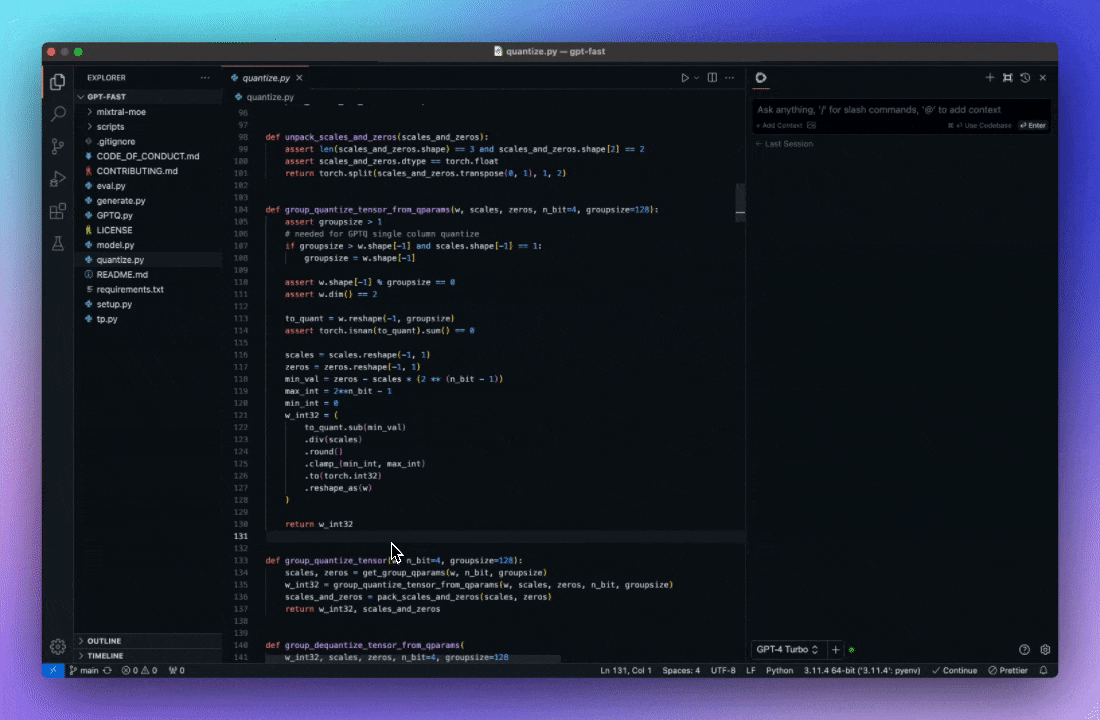
Tab to autocomplete code suggestions
tab(MacOS) /tab(Windows)
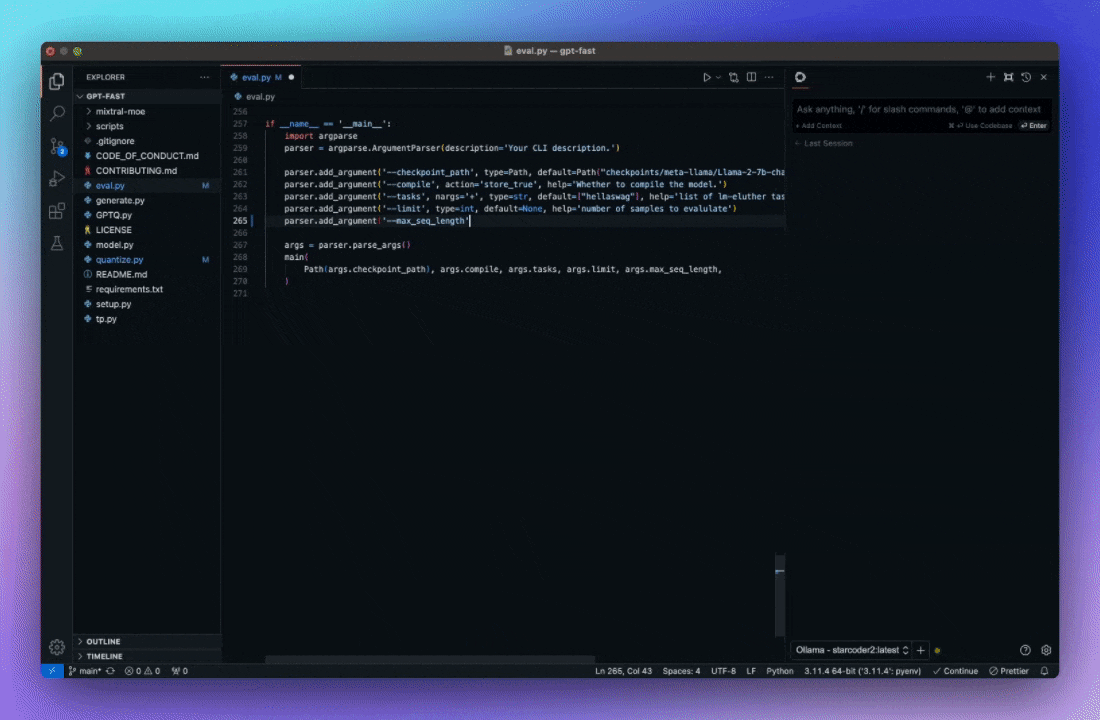
Refactor functions where you are coding
cmd+I(MacOS) /ctrl+I(Windows)
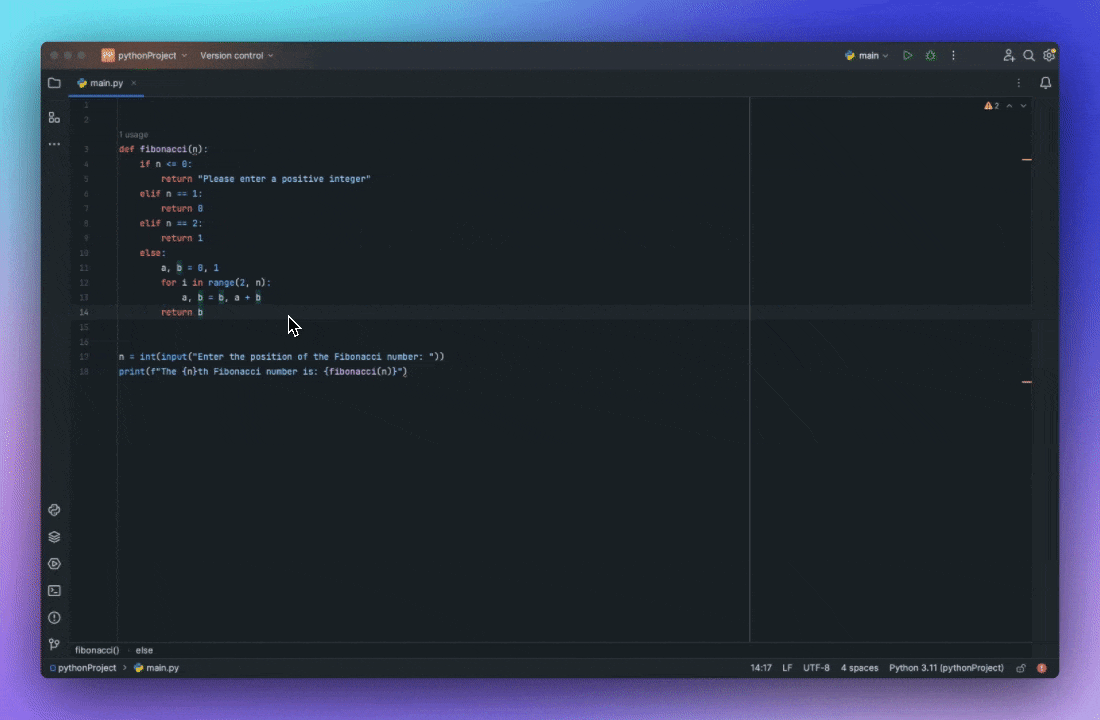
Ask questions about your codebase
@codebase(MacOS) /@codebase(Windows)

Quickly use documentation as context
@docs(MacOS) /@docs(Windows)
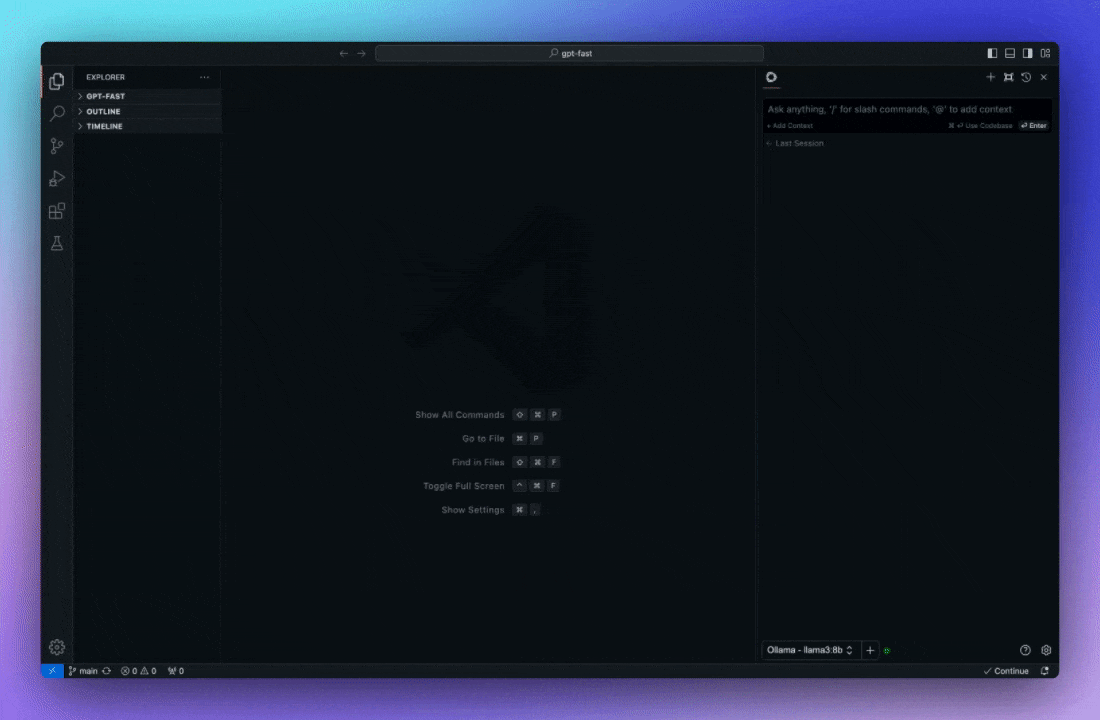
Kick off actions with slash commands
/edit(MacOS) //edit(Windows)
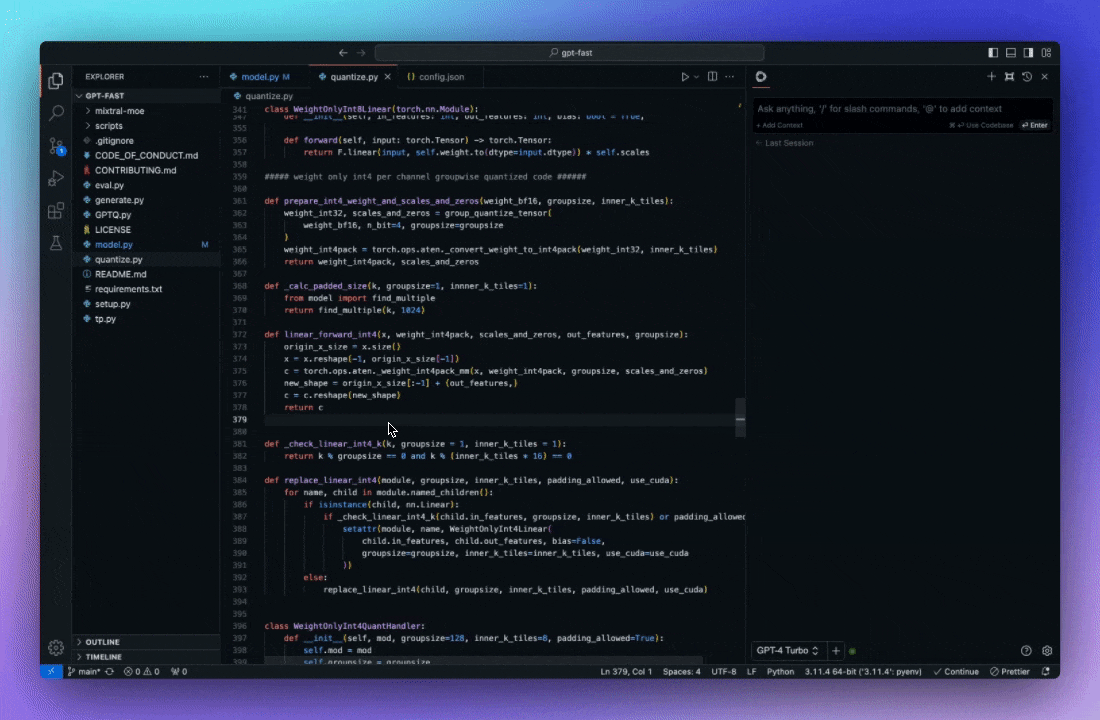
Add classes, files, and more to context
@files(MacOS) /@files(Windows)

Understand terminal errors immediately
cmd+shift+R(MacOS) /ctrl+shift+R(Windows)

PearAI simplifies project development with AI-driven code generation. Here’s an example:
Generating a Minecraft Clone
- Request code generation via AI prompts.
- PearAI will create the necessary files autonomously.
- Organize and insert the generated code into a structured project folder.
Running the Project
- Install dependencies (
pip install pygamefor Python projects). - Run the project using the terminal (
python main.py).
Why Choose PearAI Over Other IDEs?
Seamless AI Integration
- Unlike VS Code, which requires extensions, PearAI has built-in AI-powered coding features.
Free and Open-Source
- PearAI provides an excellent free alternative to paid AI-assisted IDEs.
Flexible and Versatile
- Supports Windows (unlike Zed IDE) and integrates various AI models.
Continuous Updates
- New features like LeetCode practice tools are frequently added to enhance functionality.
Final Thoughts
PearAI is a powerful AI-driven coding assistant that simplifies development with its seamless integrations and user-friendly interface. Whether you're a beginner or an advanced developer, PearAI provides an intuitive environment for boosting productivity. If you're looking for a free and feature-rich AI-powered IDE, give PearAI a try today.

